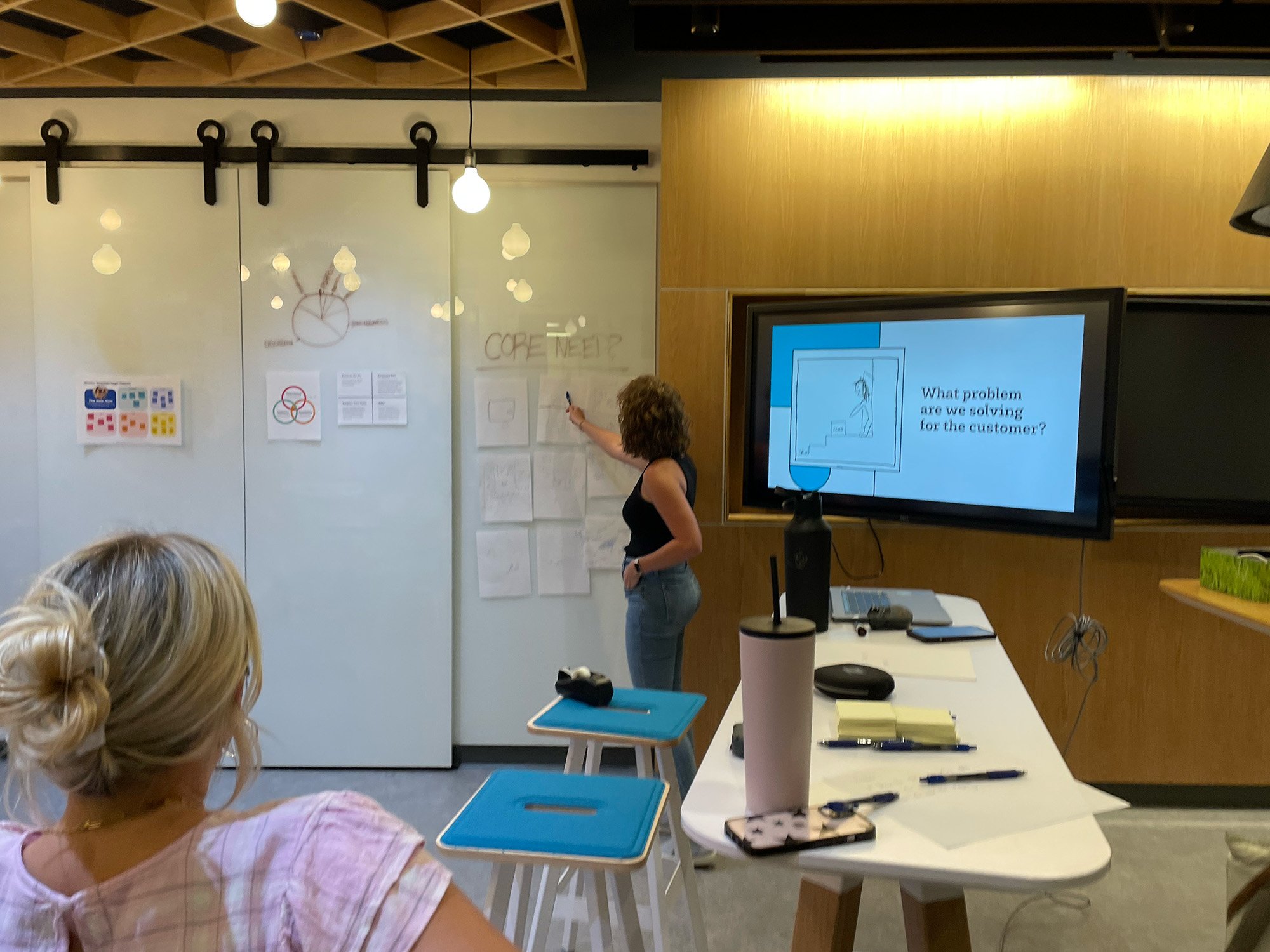UX Strategy
I’ve worked on many types of products and services, and a good UX strategy has been the strongest indicator of speed and success on all of them. When product teams know who they are building for and why, everyone can make better, faster decisions. My process always starts with a deep enough understanding of the target customer and their context. From there we align the right customer outcomes with the business objective and technical capabilities of the team. This is accomplished with any number of tools, including user research, journey mapping, storyboards, stakeholder interviews, information and system architectures, and…yes…a fair amount of sticky notes.
Note: due to NDA and industry sensitivity, I’m unable to share the specific product examples in the processes mentioned below.
Leading with Vision
Vision doesn’t work in isolation…it needs a team of people to come to life, and collaboration doesn’t just happen. Effective experience vision sessions must be structured and focused, with the right voices in the conversation talking only about what’s most important. Doing this early clears the way for speed in product design and development.
There are many ways to approach a structured ideation session, and I always customize the session to the participants and the goal.

Basing our stories on the customer insights, we start with storyboards that represent the experience and outcomes we want for our customers. This format is perfect for the business stakeholders to understand how something will work and for the technology teams to understand the intended context of the solution. Once we have that level of alignment, the storyboards become the basis for in-depth system architecture that allows engineers and developers to plan the coordination of disparate systems that need to work in concert and find the gotchas early.



